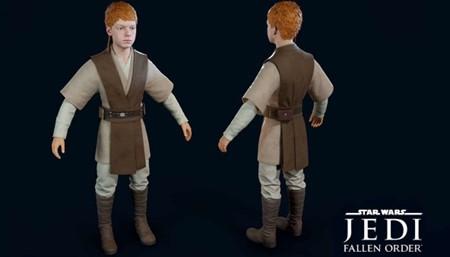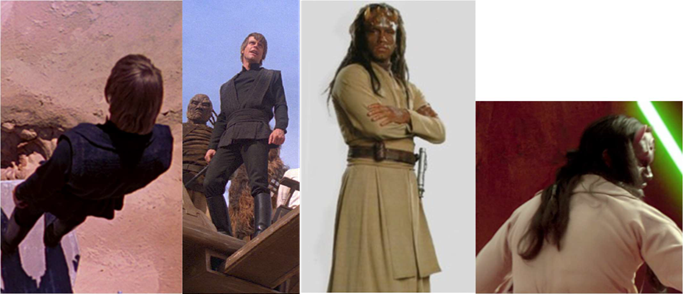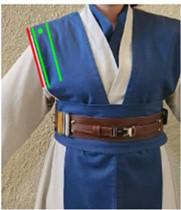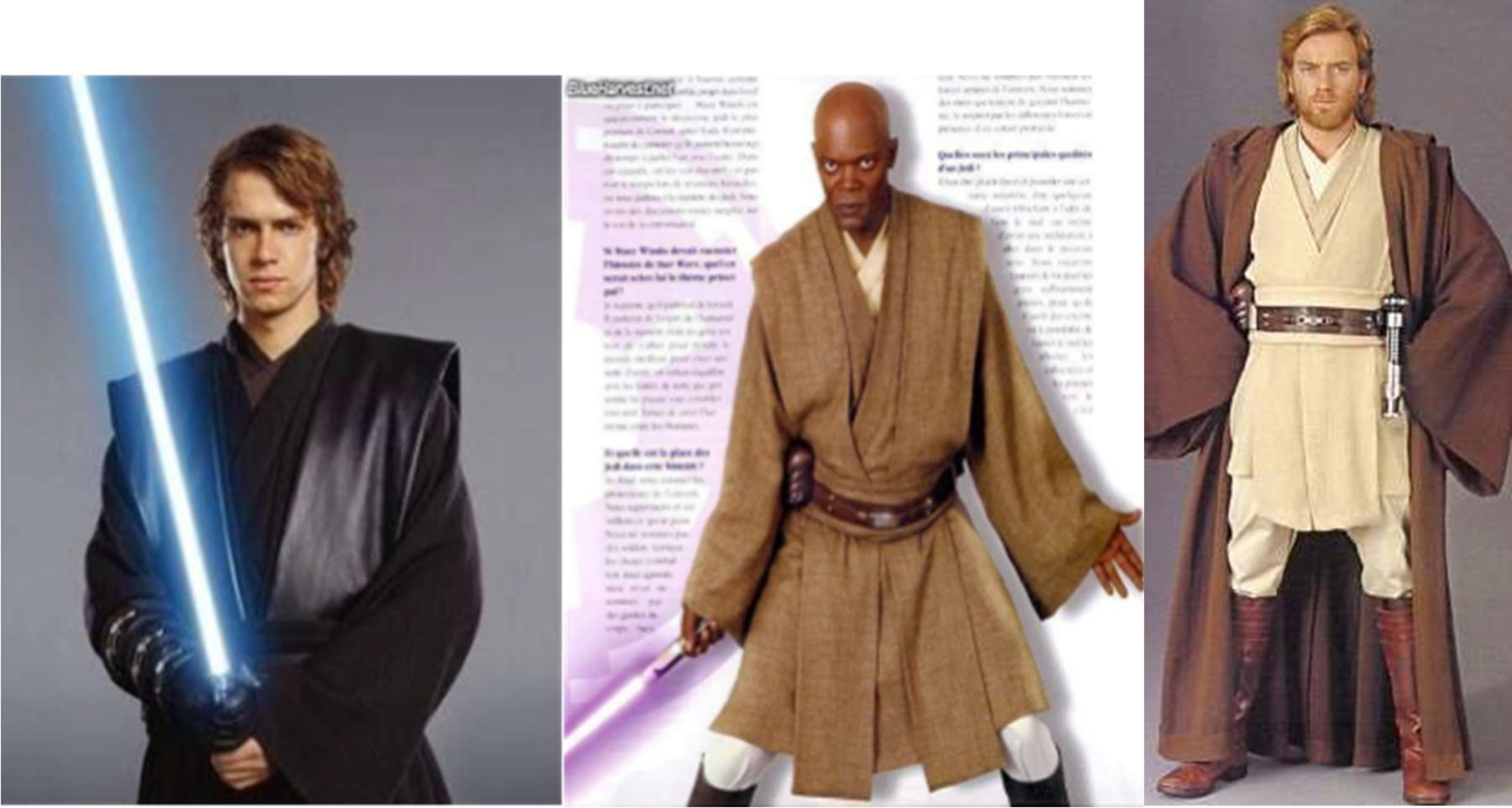Tabards
Tabards are the fabric pieces worn over the outer tunic and under the robes. There are five types of tabards that Saber Guild uses: traditional, vest, hybrid/combo, scarf, and apron. Medieval style tabards that are fashioned like a loose-fitting sleeveless coat or cape and are seen on some High Republic Jedi are not allowed under this standard. The other High Republic style that is not allowed under this template is where the tabards form an X across the body. Tabards can overlap slightly at above the obi on the front and the back.
Tabards should have hidden fasteners to attach them to the tunics to keep them from slipping down the shoulders.
Colors
Tabards can be primary or secondary colors. They can have up to 1”/ 2.54 cm trim that can be primary/secondary/or trim colors. Geometric patterns and other embellishments should be approved with the GCCs prior to construction/purchase.
Dimensions
Tabard width should be approximately shoulder width, as defined as the length from the collar of the outer tunic to the edge of the shoulder. Tabards should end no more than 1”/ 2.54 cm centimeters before or past the shoulders.
Tabard width/size should be even on the left and the right side. The width of the tabard should be consistent throughout the garment until the ends which can end in an angle or chevron, or gently rounded versions of those shapes. Length is judged from the average tabard length and not from the end when the end comes to a point/is angled.
Tabard minimum length is at the hem of the tunic or skirt. Maximum length is 6”/15.25 cm longer than the hem of the tunic or skirt, whichever is longer.
Tabards can be longer in back than the front so long as they are following a high-low tunic hem. Should a tunic or skirt hem be calf to ankle length the tabards do not have to meet the hem so long as they are knee length or longer. Tabard length should be even on the right/left side of the body. Length is judged on the average tabard length and not from the end when the end comes to a point/is angled.
Please see the figure below, which shows some approved costumes and the allowable tabard lengths on those costumes, for examples.
 Examples of approved costumes, with the allowable tabard lengths for each costume.
Examples of approved costumes, with the allowable tabard lengths for each costume.
Red (shortest allowable), Yellow (approved length), and Blue (longest allowable)
Style Options
Traditional Style
Traditional tabards are defined as two separate pieces on the left and right shoulder. This style of tabards may end at the obi in back. These tabards should remain a consistent width throughout the length of the fabric.
These tabards are seen on most Clone Wars-era Jedi such as Anakin Skywalker, Obi Wan Kenobi, and Mace Windu.
Vest Style Tabard

These tabards are seen on Tiplar and Tiplee in the Clone Wars cartoon.
Vest style tabards must meet all stated rules for minimum length, but are exempt from rules about maximum length. They must still be hemmed at least a couple of inches off the ground so as not present a tripping hazard. Vest style cannot end at the obi in back.
Vest style tabards must have a clearly defined split in the front to show the inner and outer tunics both above and below the belt. A High Republic style of just one garment worn over the tunics is not allowed.
Vest style tabards may completely wrap around the body like a vest or have a split at the side. A seam down the center of the back is not allowed. Upright collars are allowed on vest style tabards and a hood may be used so long as the tabard is not leather and there is no hood on the tunics. Hood should be similar in shape/construction to that on a Jedi robe.
Hybrid/Combo Style Tabard
 This style is best seen on a young Cal Kestis in the video game Jedi: Fallen Order.
This style is best seen on a young Cal Kestis in the video game Jedi: Fallen Order.
Hydrid style tabards follow rules for vest tabards from the waist up, and rules for standard tabards from the waist down. They must have a solid back and may either completely wrap around the body as a solid piece of fabric, or have a split on the side. Below the obi, they split into two sections which subject to the length and shape restrictions of standard tabards. Like a vest tabard, they must be made of the same fabric above and below the waist.
Note that hybrid style tabards may not end at the waist in the back, as this is indistinguishable from a vest tabard ending at the waist, which is not permitted.
Scarf Style Tabards

Scarf Style tabards involve a single piece of fabric that hangs around the neck and drops down on either side to give the appearance of a tabard in the front. This style is best seen with Tatooine Luke’s tabards in Return of the Jedi, or Agen Kolar in Attack of the Clones. The tabard is constructed similarly to a liturgical stole, and should rest smoothly around the shoulders and the back of the shoulders where they meet the neck without bunching up.
Please note that scarf tabards constructed as one straight rectangle of fabric will not rest smoothly, and will not be approved.
Apron Style Tabards
Apron style tabards have two styles. When traditional or combo style tabards shoulder pieces appear to meet under the obi and become one piece below the obi that is an apron style. An apron can also be a separate constructed piece that starts under the obi. This piece is worn with any other style of tabard in front and only with traditional or hybrid/combo style tabards in back. Shaak-Ti and Luminara Unduli from Clone Wars both have standalone apron pieces. If an applicant/member wants to drop the shoulder tabards they will need to look at the Consular/Sorcerer Standard.



